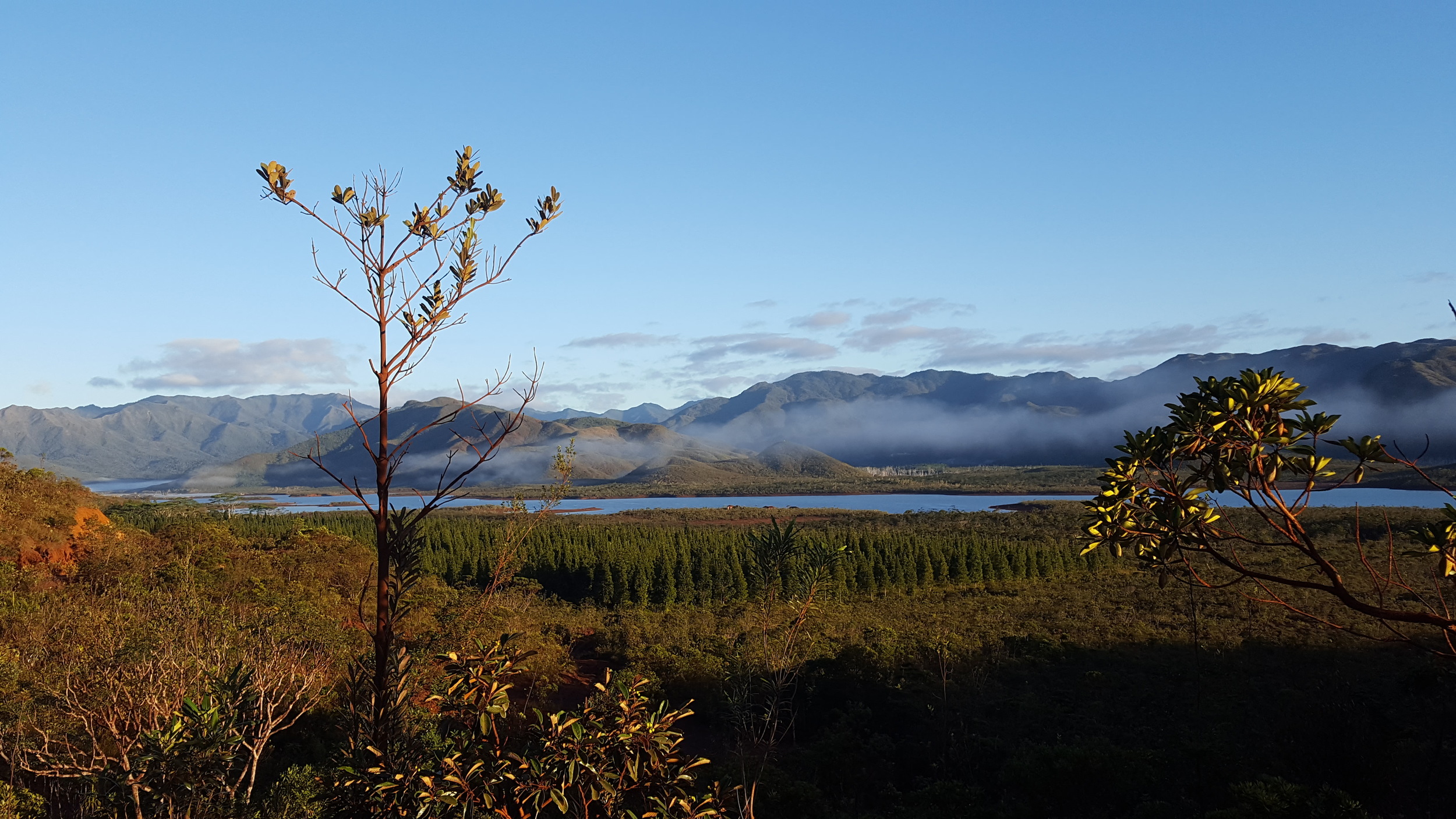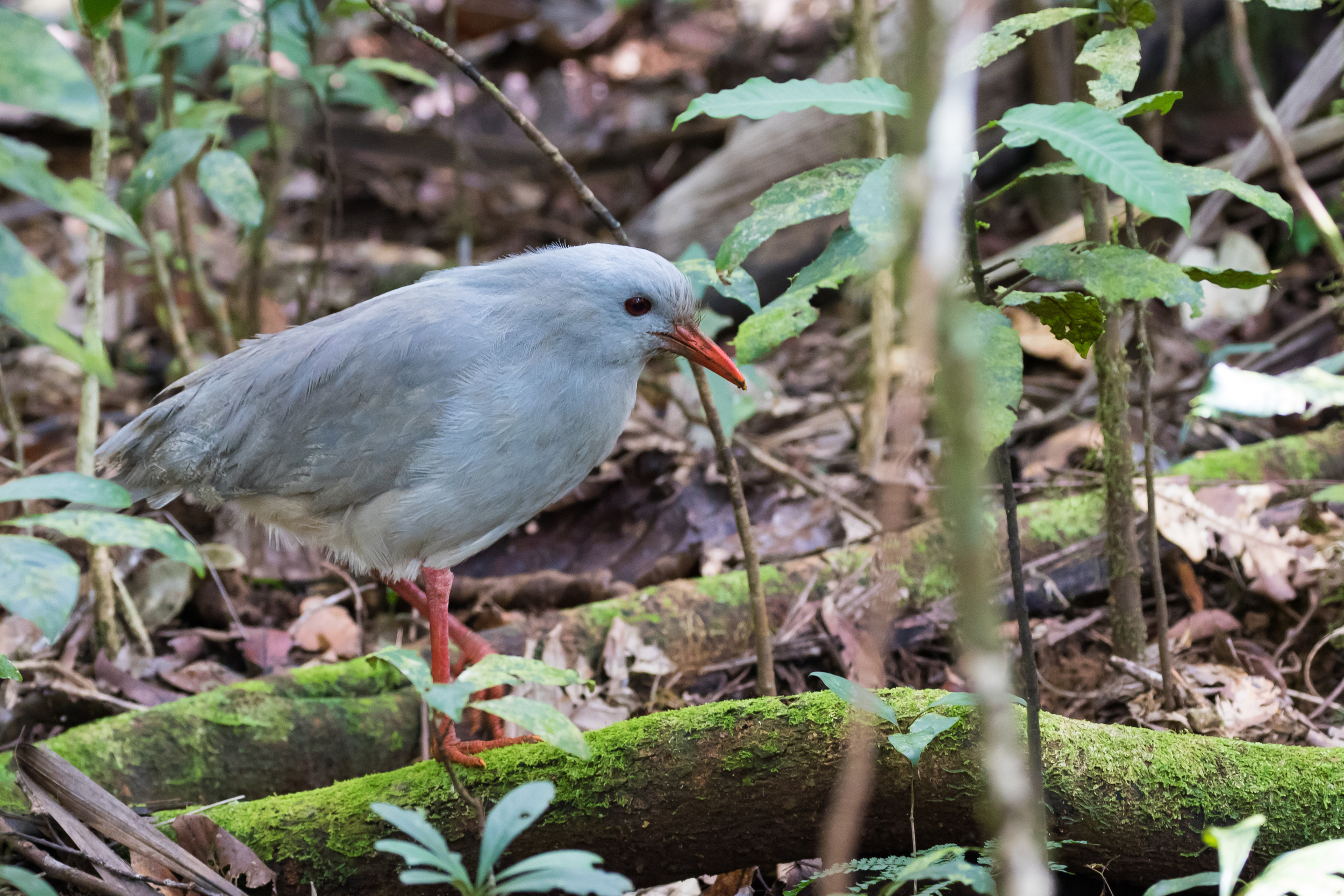Parc Provincial de la Riviere Bleue, Wednesday 5th July
Wednesday morning I set out from Noumea at 5.15am and followed the GPS navigation on my phone to the Parc Provincial de la Riviere Bleue without drama to the parc entrance. Once beyond Magenta Airport there is really only one turn to make, following signs to Yate, before the turnoff to the parc itself. It was just getting light when I arrived. The parc does not open until 7am, but Jean-Marc had said there were a number of endemics around the parc entrance so I had travelled early for some on foot birding while I waited for it to open.
I was forced to park outside the gate but walked in and around the payment station and park office. First new bird of the day was a poor view of a Horned Parakeet atop a pine near the park office. I would hear these regularly during the day and see a couple in flight but never get better views or a chance of a decent photo. A bit more walking and poking about and I had seen a few more Green-backed White-eye and a New Caledonia Myzomela (lovely red, white and black bird, very similar to Scarlet Honeyeater in eastern Australia). A Grey Fantail (no streaks on this bird) was the only other bird before I made my way back to the car in time for the park to open.
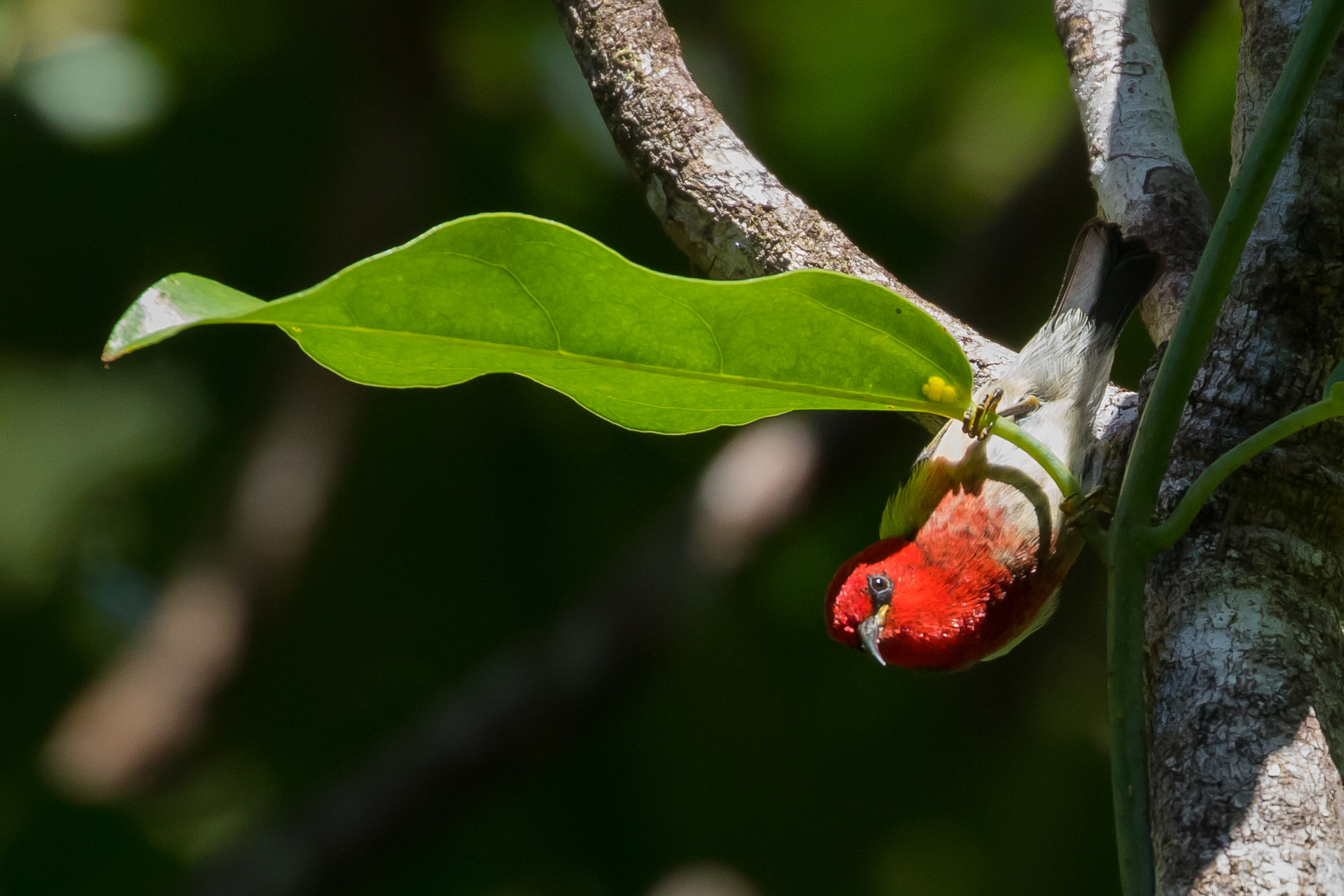
At 7am a few staff arrived and opened the gate. I paid the 400F entrance fee and the 400F bus ticket I would need to get deeper into the park. Apparently it was once possible to drive one’s own car in to the humid forest – prime Kagu habitat – but more recently it is only park staff (and licensed operators like Isabelle) that can drive in, along with a shuttle-bus service that runs about once an hour during the day. The alternative is to walk or hire a bike. I chose to take the bus as far as the Grand Kaori, a superb 1000 y.o. tree that only remains because, unlike all of the others that once stood here, it was too big to fell. The Grand Kaori is also supposedly a good site for Kagu.
Once I had my tickets I drove the 6-7km to Pont Perignon where the first navette (shuttle) would depart at 7.30. I made it in the nick of time after a couple of stops to pick up Barred Honeyeater and White-bellied Goshawk. White-faced Heron and Little Pied Cormorant at the bridge were a reminder that I was not that far from Australia.



It is about 6km from the Pont Perignon to the point where the humid forest starts, and a further 2km to the Grand Kaori, where I alighted alone (leaving the only other 2 passengers to carry on with the shuttle) and I spent the next 5-6 hours on foot.
I began by walking the boardwalk and trail past the Grand Kaori and through the forest. Immediately I picked up Streaked Fantail, a lot like Grey in appearance and conspicuous behaviour, but with a streaked breast.
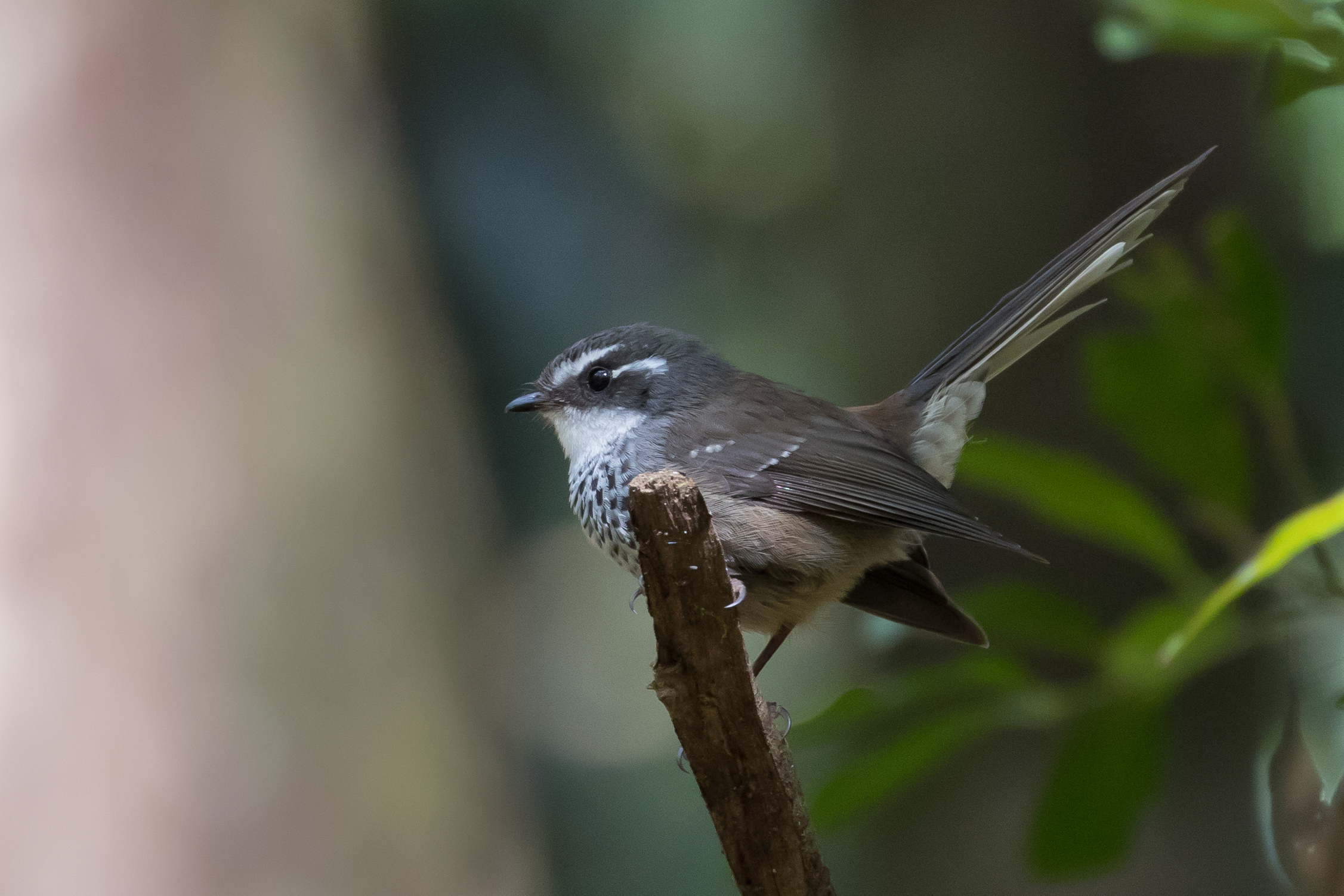
A few Horned Parakeets could be heard calling above but I couldn’t see them. A rasping alarm attracted my attention and I found a Southern Shrikebill, an oddly shaped bird with a long powerful bill and long cocked tail. Halfway around the trail reaches a viewpoint over the water and I hear I heard a rustle in the undergrowth. Then a drawn out hiss. I turned to see a shape move and morph into a large pale grey bird – a Kagu! You bloody beauty! I soon realized there were two birds, one following the other. The light was very poor and my attempts at photography futile until they circled right round and decided to cross the track right in front of me. Half an hour into my first proper birding of the trip and I had scored with the top target – an auspicious start!
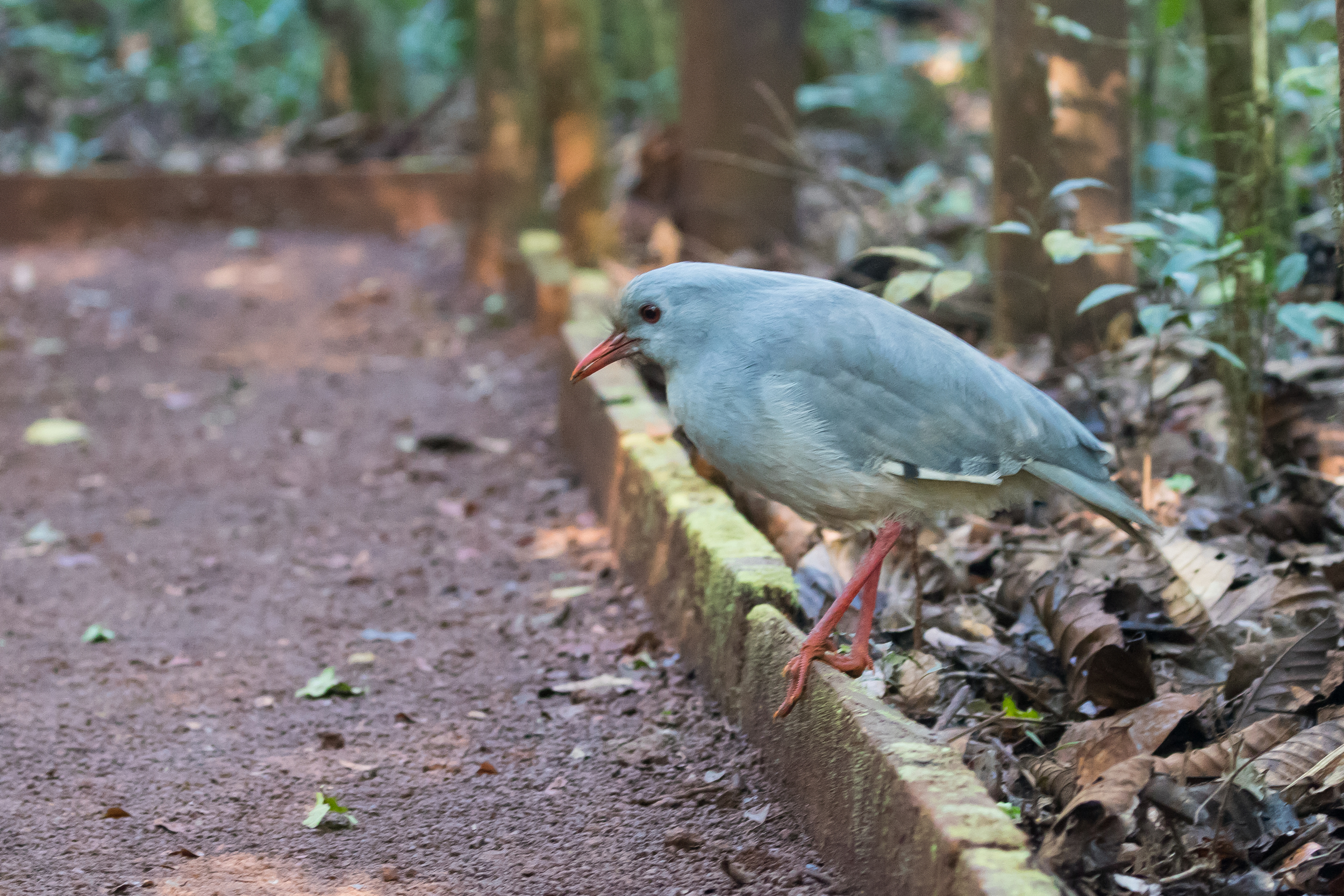
I bounded along the track back to the bus stop happily. Sweet Yellow-bellied Flyrobin behaved just like their close cousins in Australia, Eastern Yellow Robins, following me around, popping up on sticks and tree trunks to check out the big bumbling intruder.

My next main target was Crow Honeyeater. Jean-Marc had emailed me a week or two beforehand saying he had most recently seen one at a spot called Gue de la Pourina, which is about a km further along from the Grand Kaori. I decided to walk this stretch of road, birding as I went. Playback seemed to be Jean-Marc’s main tactic, judging by the trip reports I had read, so I too played the call, though not often. I started at the Grand Kaori bus stop, as much to familiarize myself with the call as anything, and then tried again about 100m and 200m along the road. Barely 200m from the Grand Kaori I heard a rustle in the tree above the road, and looked up to see a largish back shape almost directly overhead. I only had an arse-end view as it shook itself down, but as it turned I could see the pink wattle on its face – a Crow Honeyeater – target #2 in the bag already by 8.45am. As I moved to try and get a better view I heard the sound of a vehicle approaching. Just my luck that the one car that would come along in the next hour should arrive right at the moment I have just found one of the world’s rarest birds. Before I could manoeuvre to a better spot the vehicle trundled past and the honeyeater flushed deep into the forest not to be seen again.
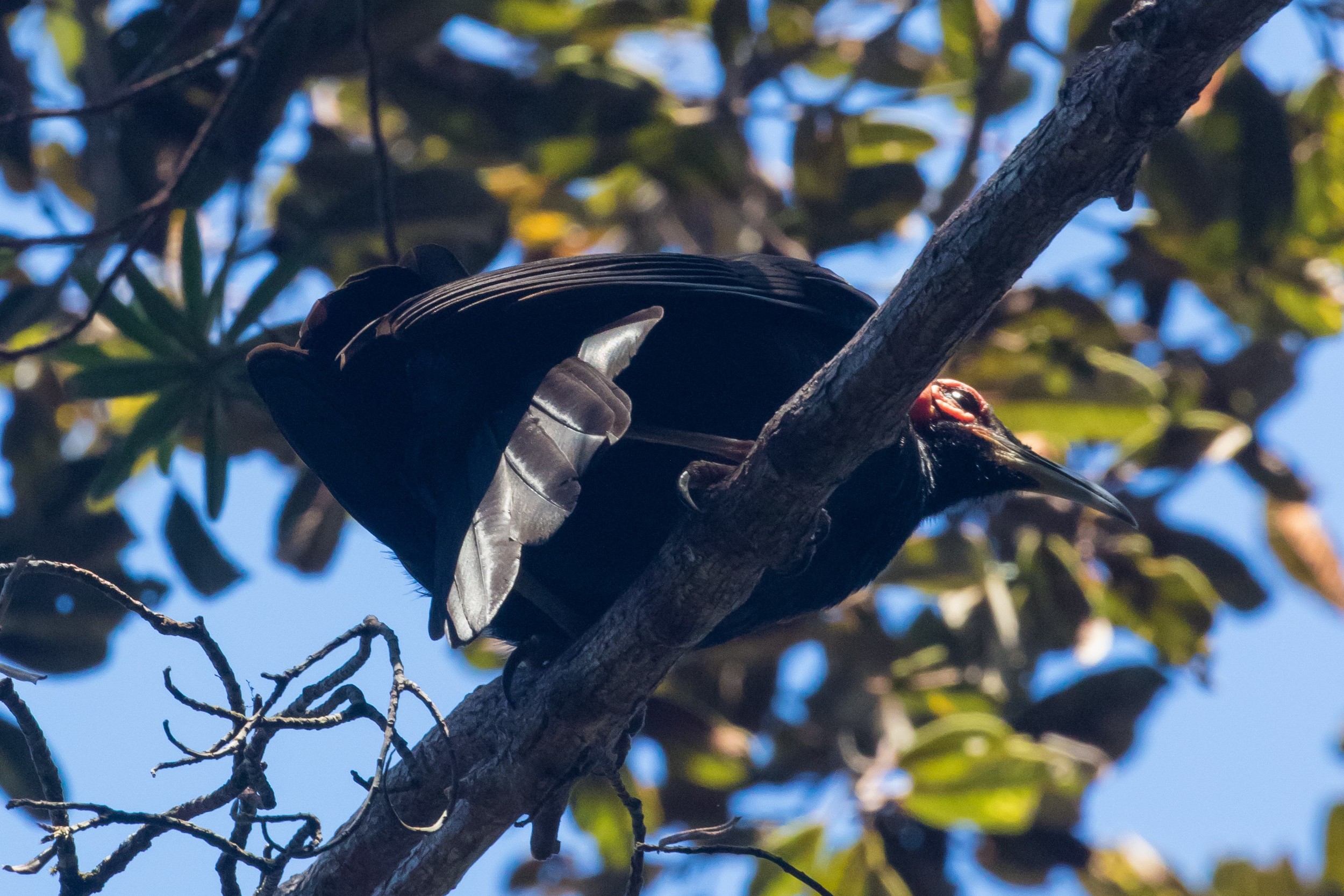
I carried on to Gue de la Pourina. Along the way I found my first New Caledonian Whistler, a split from Golden but this one more obviously different with a deeper tinge to the colour, including an orange glow to the upper breast. I also heard a few Goliath Imperial Pigeons. Once at Gue de la Pourina (around 9.20) I finally managed to pin down a view of one and also found my first New Caledonian Friarbird. A sweet warbling got me thinking Gerygone, and sure enough I soon pinned down a small group of Fantailed Gerygone.
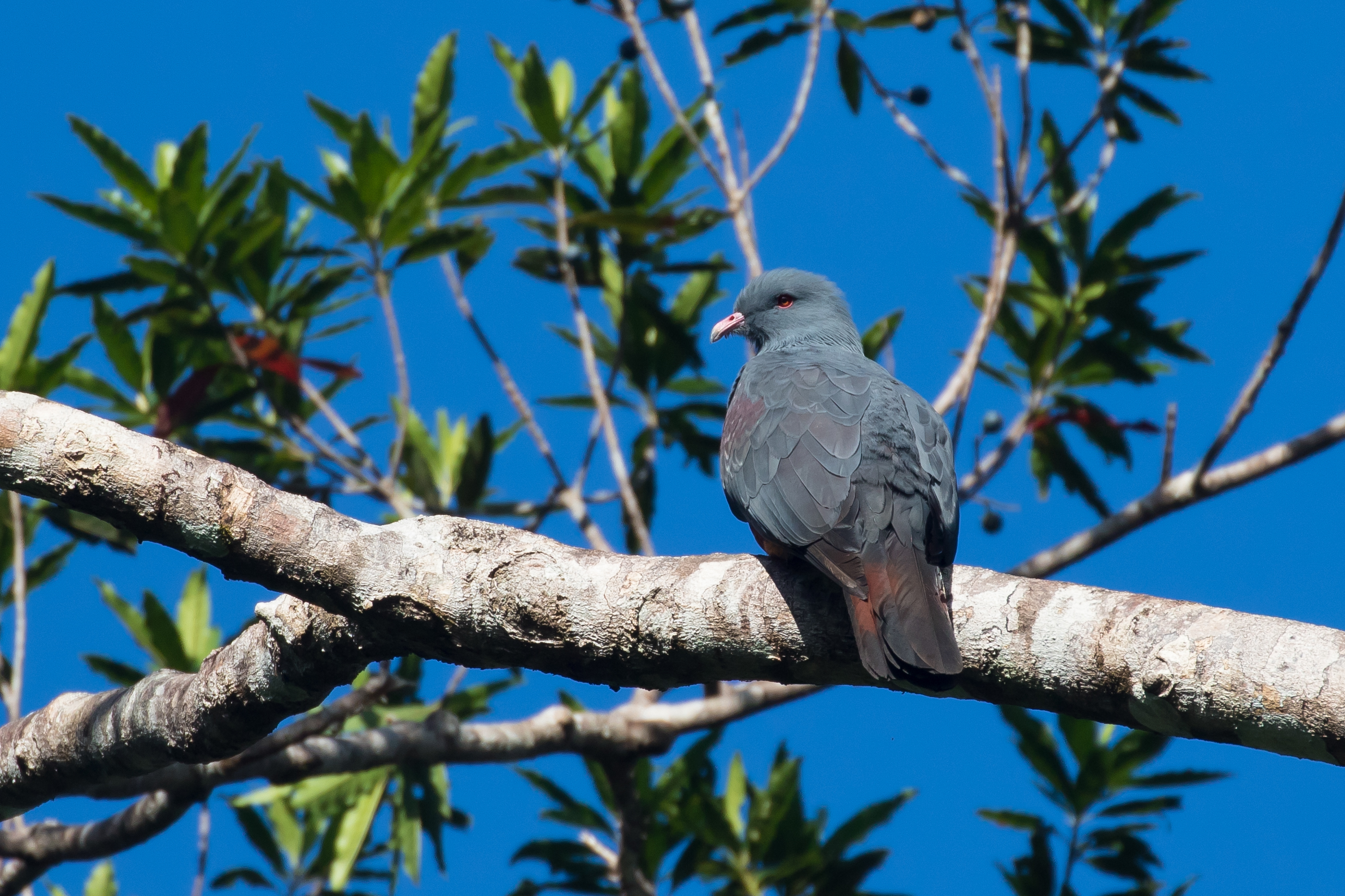
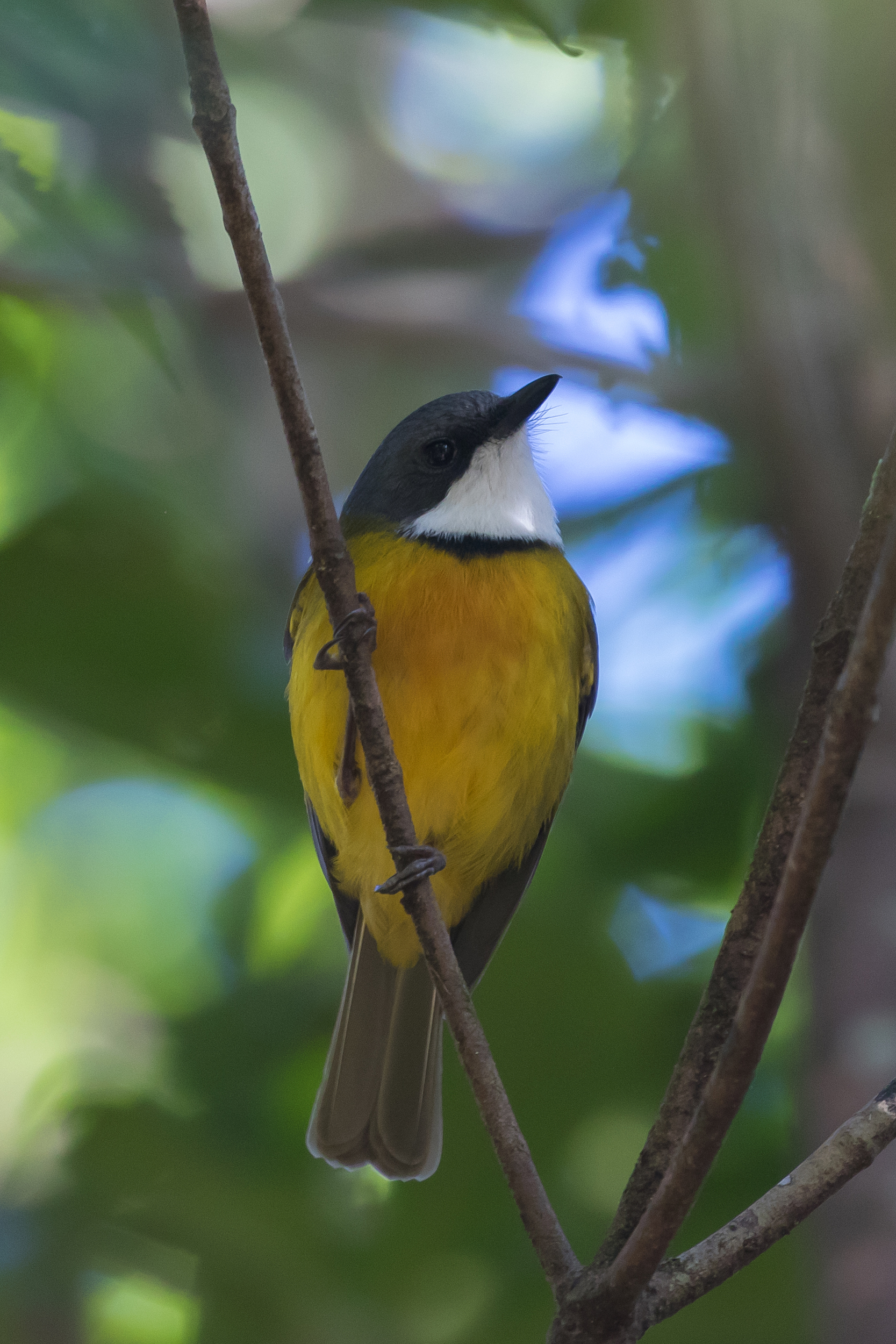

A trail leads off up into the forest here and I initially decided to follow it – scoring brief views of another Kagu before it vanished into the forest – but then changed my mind in favour of walking the road to Pont Germain.
Another vehicle approached and I realized it was Isabelle with some paying punters. We introduced ourselves (she said she was expecting to see me at some point during the week) and I asked about Cloven-feathered Dove, next-most-desirable target on my list. Her advice was to try back at the Grand Kaori, though I was mindful that a number of reports struggled with Pigeon Verte in Riviere Bleue and picked it up elsewhere. I would head back to the Grand Kaori later, but it was still only 10am so I carried on towards the Pont.
Along the way I found a female New Caledonian Flycatcher (red throated) and later a pair including a male (which has a deep blue/grey throat), as well as a pair of New Caledonia Cuckooshrikes. I also heard and had flight views of more Horned Parakeets but they refused to pose for pictures. The endemics were falling thick and fast, though I had not heard anything that sounded like it might be Cloven-feathered Dove.

A 100m short of the bridge I decided to wander back and a few moments later Isabelle pulled up again (punterless now) and offered a lift back to the Grand Kaori. I thought briefly but declined: “I will see and hear more on foot”, I ventured. She agreed. I saw no new birds on the walk back but my prediction was right – within 5min of seeing Isabelle I had come across another Kagu right on the roadside. This bird was less nervous than the previous 3 and despite my presence and constantly clicking shutter, kept on tossing leaves looking for grubs and the like, apparently unperturbed.
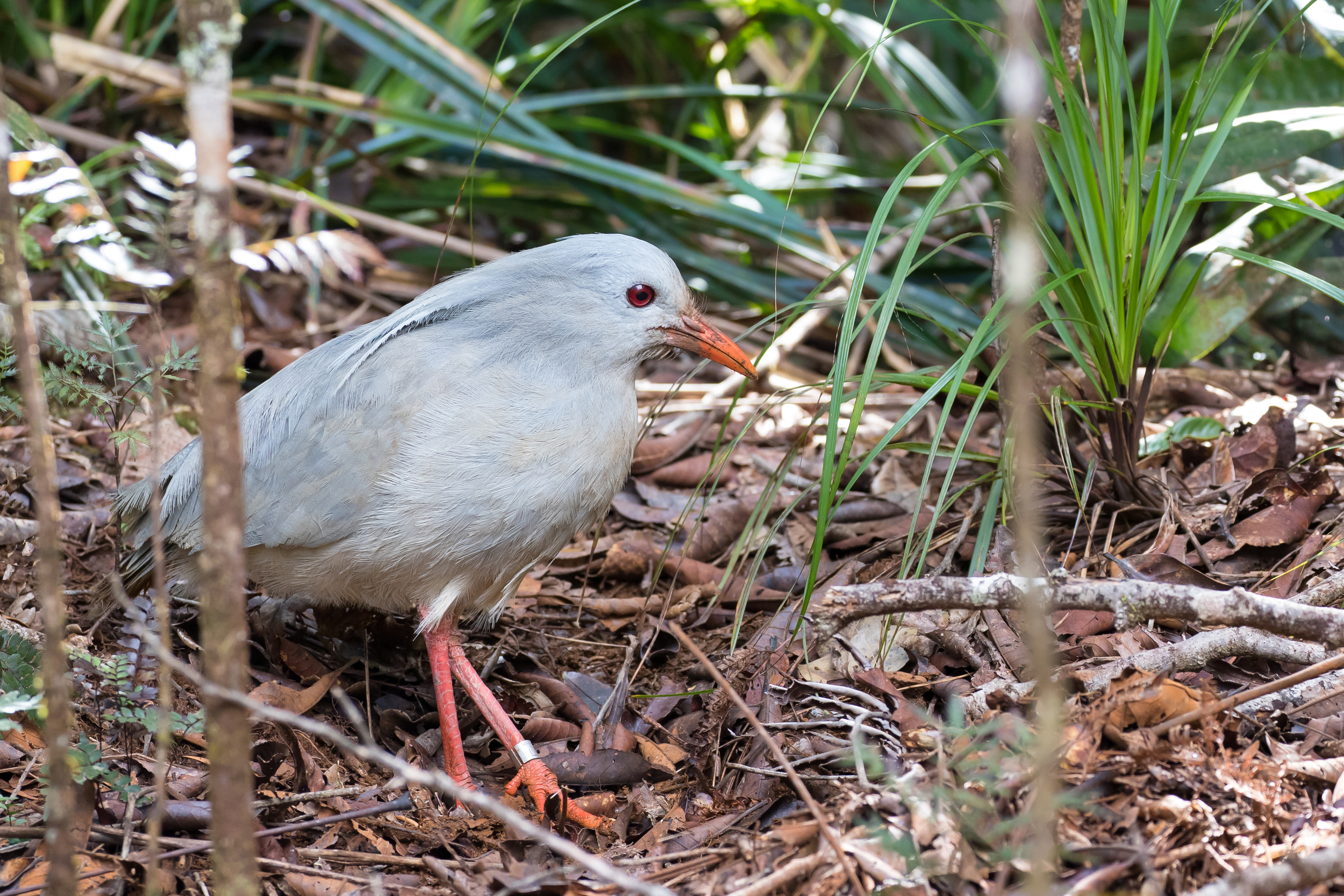
200m short of the Grand Kaori, where I’d had the Crow Honeyeater I tried more playback but this time there was no sign. Looking up the road I did see movement on the road and realized that there were 3 Kagu scuttling across the track.

My main target now was Cloven-feathered Dove, though I had not heard a peep all day. I walked the Grand Kaori boardwalk until I reached the viewpoint over the river. I tried a bit of playback but then gave up and tried to entice some Horned Parakeets closer. Leaving the camera behind I walked back up the boardwalk until a couple of tourists came along. Just as they arrived I noticed movement above me, focused the bins and realized a Pigeon Verte had just arrived above me! I raced back for the camera and the tourists, bless them, kept absolutely still, not knowing what I’d seen, but sensing that I needed their cooperation. Not often people behave like that and so refreshing – if you are reading this, thank you! I showed them the very pretty Cloven-feathered Dove, and bagged a few record shots. They drifted off as I continued to try for a better angle for photos. Suddenly there was a shout from about 20m along the track: “Cagou!” They had found a Kagu right by the trail, which then proceeded to follow us and walk along the track right between us, far too close for even the 100mm end of my zoom The phone was a more useful tool for pics in these circumstances. It was their first wild Kagu and they were blown away by the experience. “Mais c’est sauvage!”, he exclaimed to me.
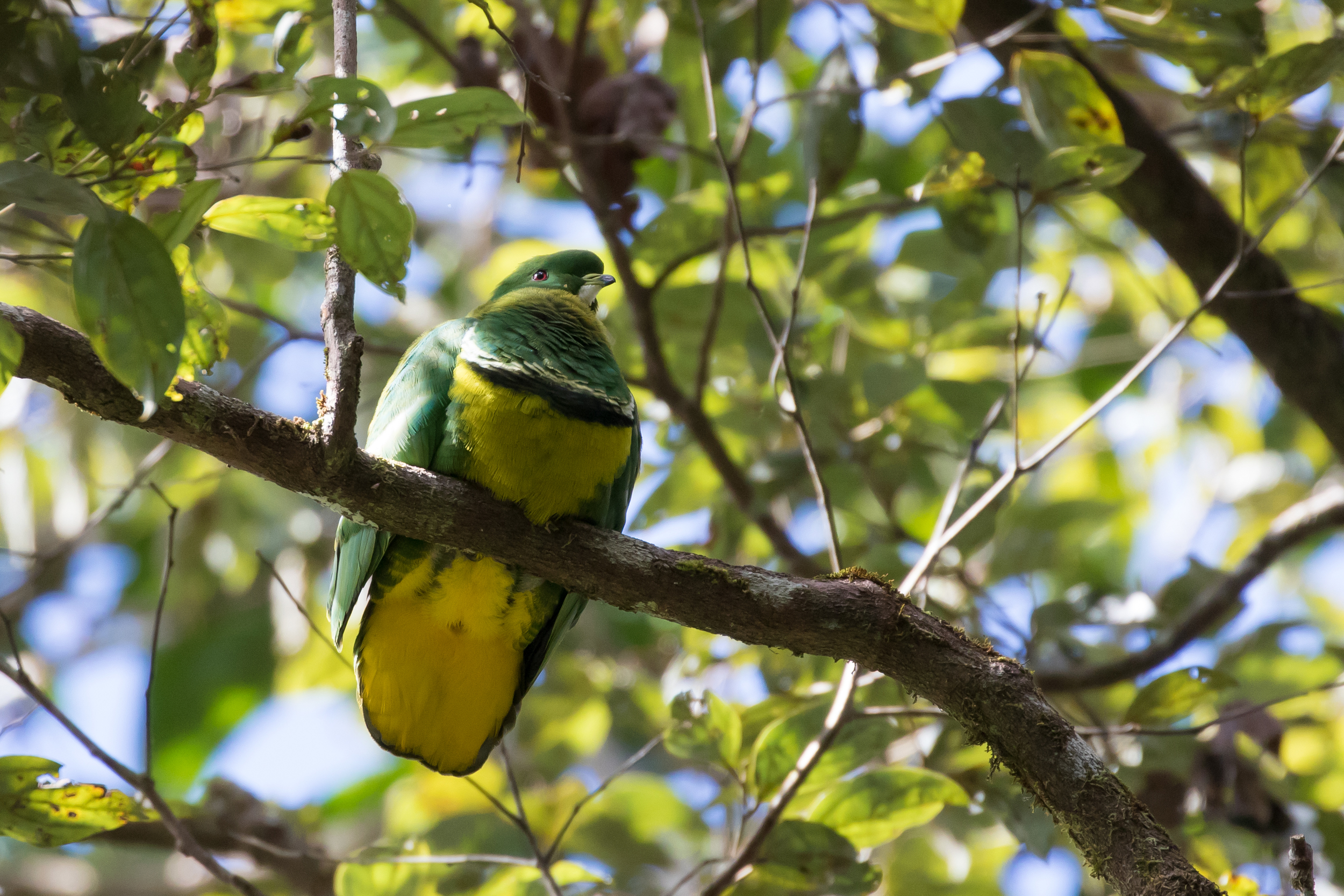
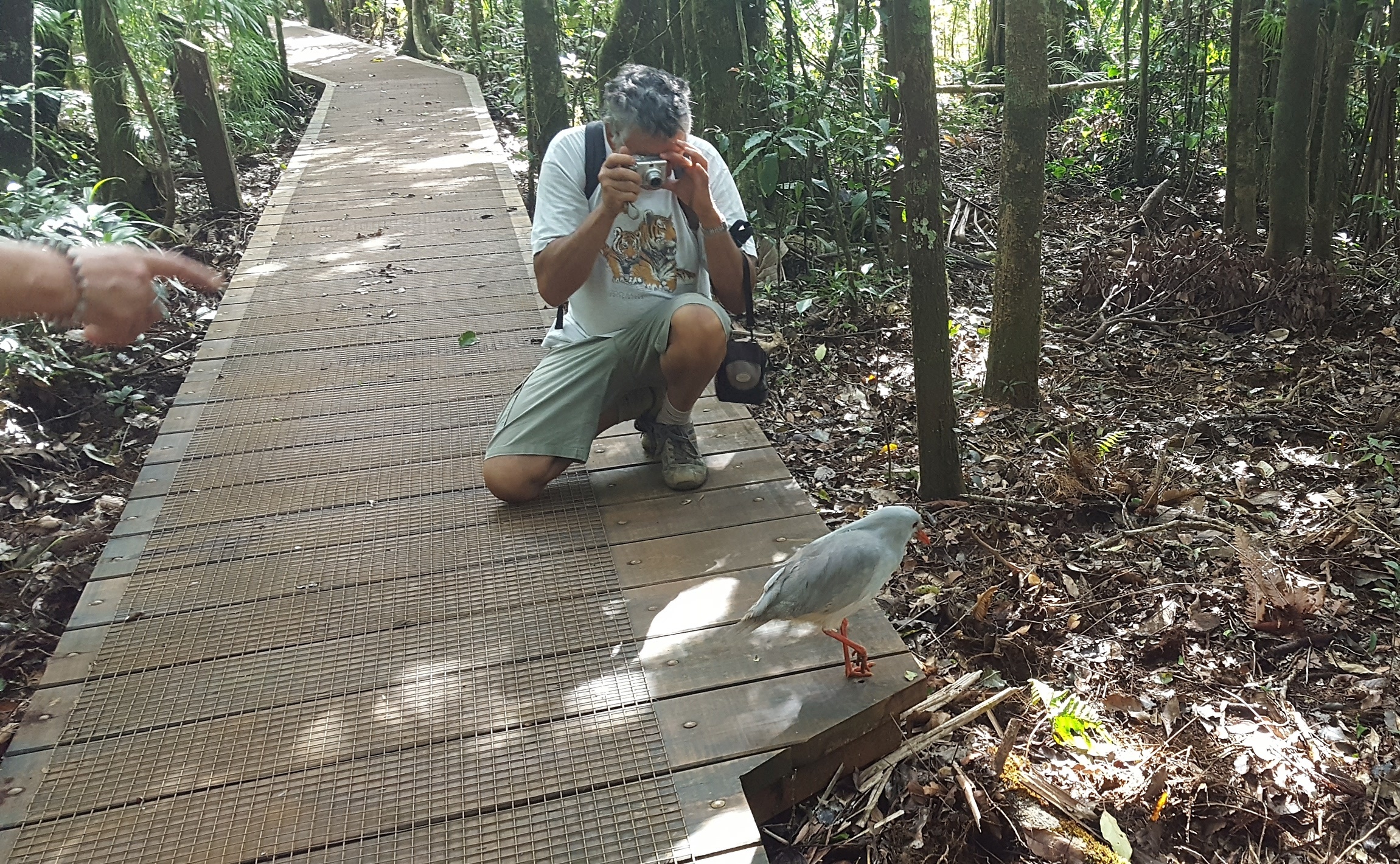
I looked at my watch and decided that I might as well give myself some birding on the drive back through the park so I wandered back to the bus stop in time for the 13.25 navette back to Pont Perignon.
Other than another White-bellied Goshawk in flight I didn’t see much on the drive back to the park entrance until I was within a km of the park offices. Here there are some pine plantations (GPS -22.143118, 166.731677) and I wandered a track with scrub on one side and pines on the other. I was hoping for a Red-fronted Parakeet (I was unsuccessful) but my attention was immediately grabbed when I saw a finch fly off showing a conspicuous red tail. Sure enough when I pinned this and its mates down I had my first Red-throated Parrotfinch. I chased a small group of these, mixed with Green-backed White-eyes, but could not pin them down for a photo. A Long-tailed Triller bombed over, easily identified in flight.
I nosed around the park entrance some more hoping for Parakeets but pretty soon gave up in favour of an earlier-than-expected arrival back into Noumea and the possible credits this would generate. A White-breasted Woodswallow was the last bird of the day, hawking from wires at the Yate turnoff.
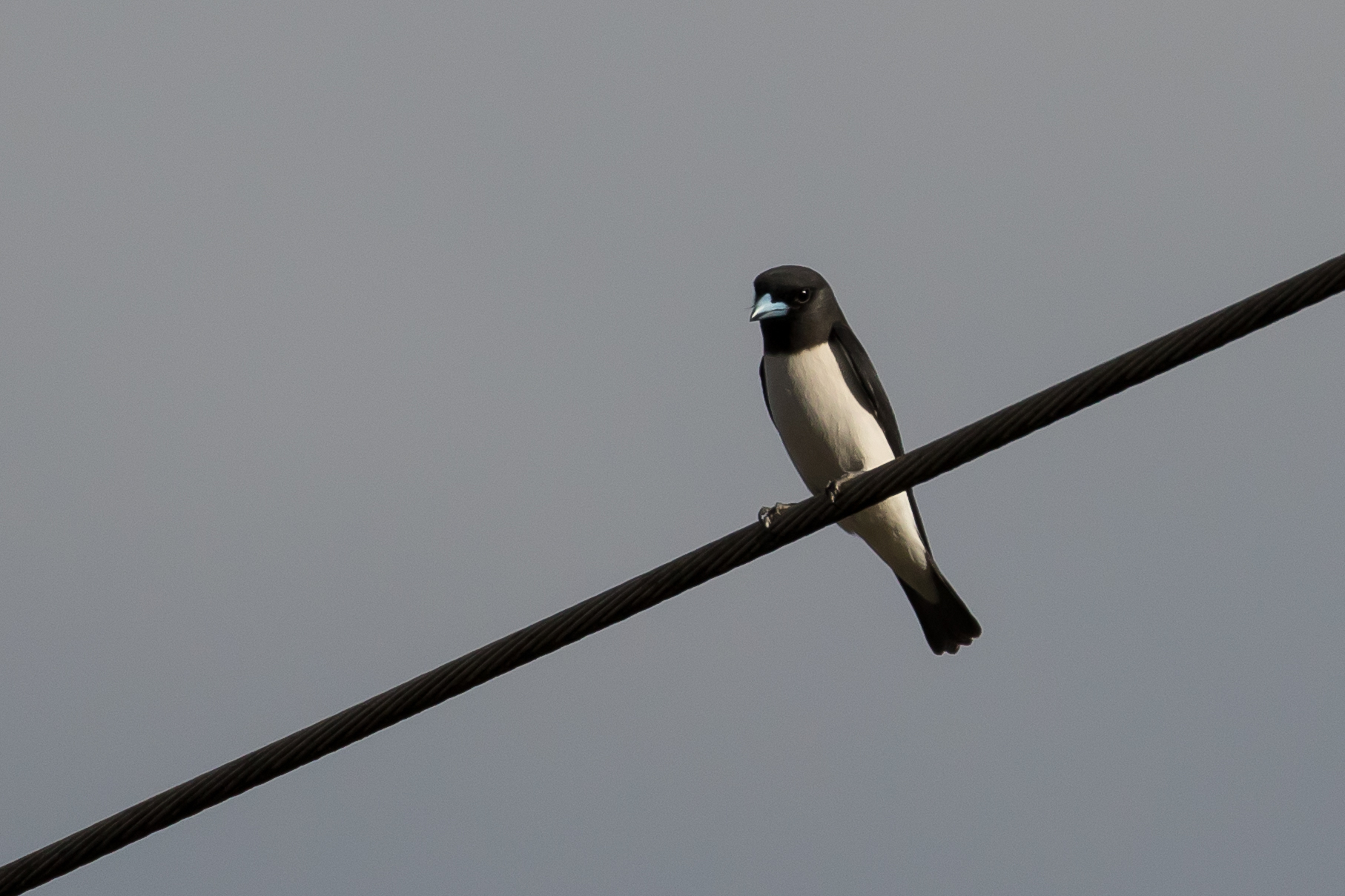
It had been a great day, exceeding all expectations. I was left with only 3 endemic (New Cal Crow, Red-fronted Parakeet and Striated Starling) and 2 non-endemic (South Melanesian Cuckooshrike and Metallic Pigeon) targets left.
to be continued…

